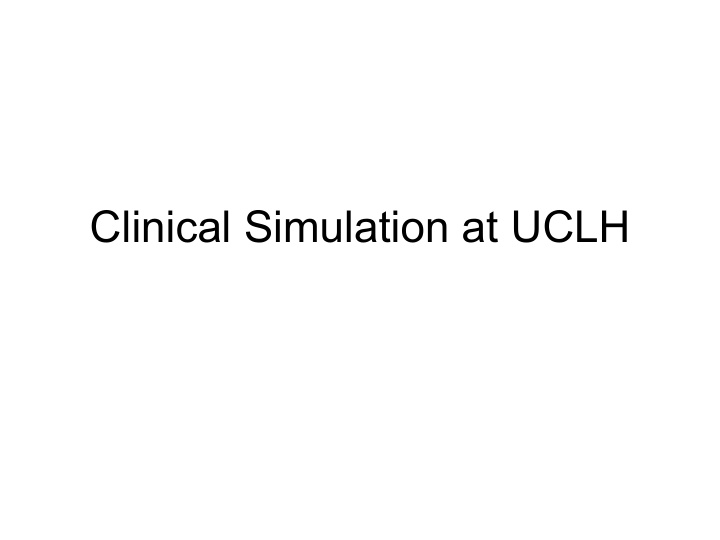



Clinical Simulation at UCLH
STeLi • £30 million across London since 2008 • CMO’s Report 2008 ‘Safe medical practice, machines and manequins’ – Theatre – Ward – GP surgery – MAS
Why use Simulation? • Experiential learning time reduced • EWTD • MMC • H@N
Why use Simulation? • See one, do one, teach one • See one, simulate one, do several, be assessed on several • SAFETY • Attain competance early and excellence more quickly with supervised practice
• Less exposure to critical events – and where poorly managed → ↑ morbidity and mortality • Often signs present that WILL lead to demise if not acted upon appropriately • Learn how to ANTICIPATE potential events and PREVENT them occurring
Simulators
Types of Simulator • Part task – Surgical procedures – Anaesthesia – Medicine • Full immersion, in situ simulation – Critical incidents – Team working
Human Factors in the Simulator • Introduction to Crisis Resource Management • Technical skills • Teamwork, Leadership, Communication • Discussion of acute management of cases • Discussion of guidelines and SI’s
• “Suspends disbelief” as far as possible • Specific learning objectives will be gained with each scenario • Enables training on less common “acute” events • Promotes communication & team building • Allows mistakes to be made & learned from in a safe, non-threatening environment
Courses at UCH • Undergraduates • Foundation Year doctors • Anaesthesia • Paediatrics • Surgical • Medicine, HASU
Challenges • Faculty heavy courses • Small numbers per course • Skilled faculty
Recommend
More recommend